For the 2025 school year, there is 1 public middle school serving 751 students in Crisp County School District. This district's average middle testing ranking is 2/10, which is in the bottom 50% of public middle schools in Georgia.
Public Middle School in Crisp County School District have an average math proficiency score of 18% (versus the Georgia public middle school average of 35%), and reading proficiency score of 21% (versus the 39% statewide average).
Minority enrollment is 71% of the student body (majority Black), which is more than the Georgia public middle school average of 66% (majority Black).
Overview
This School District
This State (GA)
# Schools
5 Schools
669 Schools
# Students
3,442 Students
460,632 Students
# Teachers
253 Teachers
32,363 Teachers
Student : Teacher Ratio
14:1
14:1
District Rank
Crisp County School District, which is ranked within the bottom 50% of all 222 school districts in Georgia (based off of combined math and reading proficiency testing data) for the 2021-2022 school year.
The school district's graduation rate of 83% has decreased from 86% over five school years.
Overall District Rank
#189 out of 222 school districts
(Bottom 50%)
(Bottom 50%)
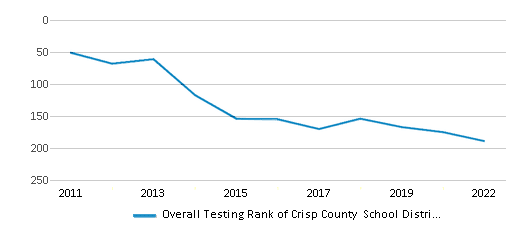
Math Test Scores (% Proficient)
19%
37%
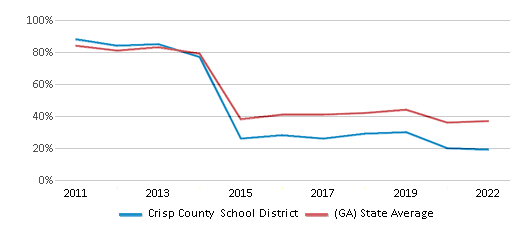
Reading/Language Arts Test Scores (% Proficient)
19%
40%
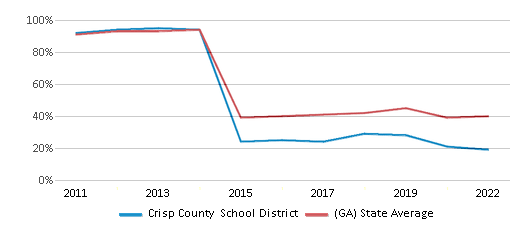
Science Test Scores (% Proficient)
25%
40%
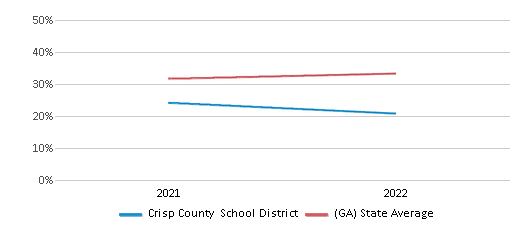
Graduation Rate
83%
84%
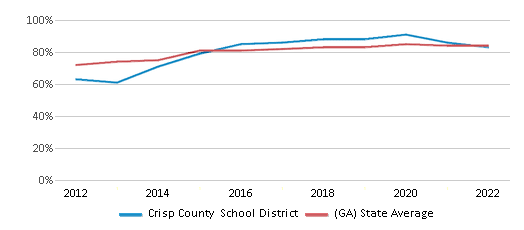
Students by Ethnicity:
Diversity Score
0.57
0.71
# American Indian Students
5 Students
1,062 Students
% American Indian Students
n/a
n/a
# Asian Students
54 Students
21,729 Students
% Asian Students
2%
5%
# Hispanic Students
258 Students
82,070 Students
% Hispanic Students
7%
18%
# Black Students
2,033 Students
174,895 Students
% Black Students
59%
38%
# White Students
961 Students
158,602 Students
% White Students
28%
34%
# Hawaiian Students
n/a
523 Students
% Hawaiian Students
n/a
n/a
# Two or more races Students
131 Students
21,751 Students
% of Two or more races Students
4%
5%
Students by Grade:
# Students in PK Grade:
222
1,052
# Students in K Grade:
246
5,528
# Students in 1st Grade:
243
5,888
# Students in 2nd Grade:
245
6,121
# Students in 3rd Grade:
234
5,929
# Students in 4th Grade:
233
6,158
# Students in 5th Grade:
218
8,331
# Students in 6th Grade:
237
125,682
# Students in 7th Grade:
276
131,446
# Students in 8th Grade:
238
133,602
# Students in 9th Grade:
287
10,391
# Students in 10th Grade:
305
7,643
# Students in 11th Grade:
242
6,973
# Students in 12th Grade:
216
5,888
# Ungraded Students:
-
-
District Revenue and Spending
The revenue/student of $16,604 is higher than the state median of $14,305. The school district revenue/student has grown by 9% over four school years.
The school district's spending/student of $15,216 is higher than the state median of $13,431. The school district spending/student has grown by 9% over four school years.
Total Revenue
$57 MM
$24,999 MM
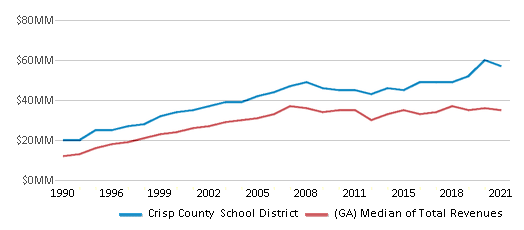
Spending
$52 MM
$23,473 MM
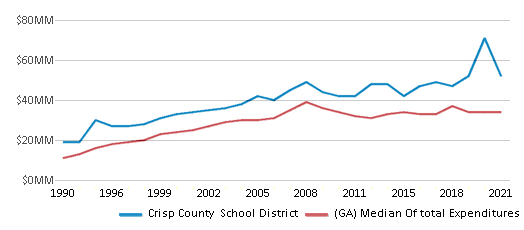
Revenue / Student
$16,604
$14,305
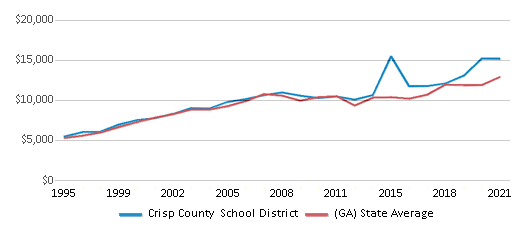
Spending / Student
$15,216
$13,431
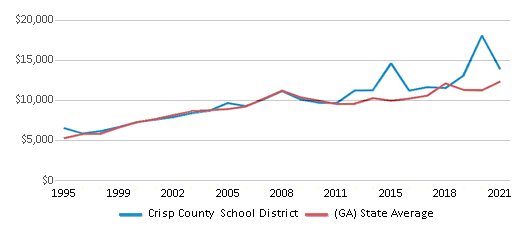
Best Crisp County School District Public Middle Schools (2025)
School
(Math and Reading Proficiency)
(Math and Reading Proficiency)
Location
Grades
Students
Rank: #11.
Crisp County Middle School
(Math: 18% | Reading: 21%)
Rank:
Rank:
3/
Bottom 50%10
1116 E 24th Ave
Cordele, GA 31010
(229) 276-3460
Cordele, GA 31010
(229) 276-3460
Grades: 6-8
| 751 students
Recent Articles

Year-Round Or Traditional Schedule?
Which is more appropriate for your child? A year-round attendance schedule or traditional schedule? We look at the pros and cons.

Why You Should Encourage Your Child to Join a Sports Team
Participating in team sports has a great many benefits for children, there is no doubt. In this article you will learn what those benefits are.

White Students are Now the Minority in U.S. Public Schools
Increasing birth rates among immigrant families from Asia and Central and South America, combined with lower birth rates among white families, means that for the first time in history, public school students in the United States are majority-minority. This shift in demographics poses difficulties for schools as they work to accommodate children of varying language abilities and socio-economic backgrounds.





